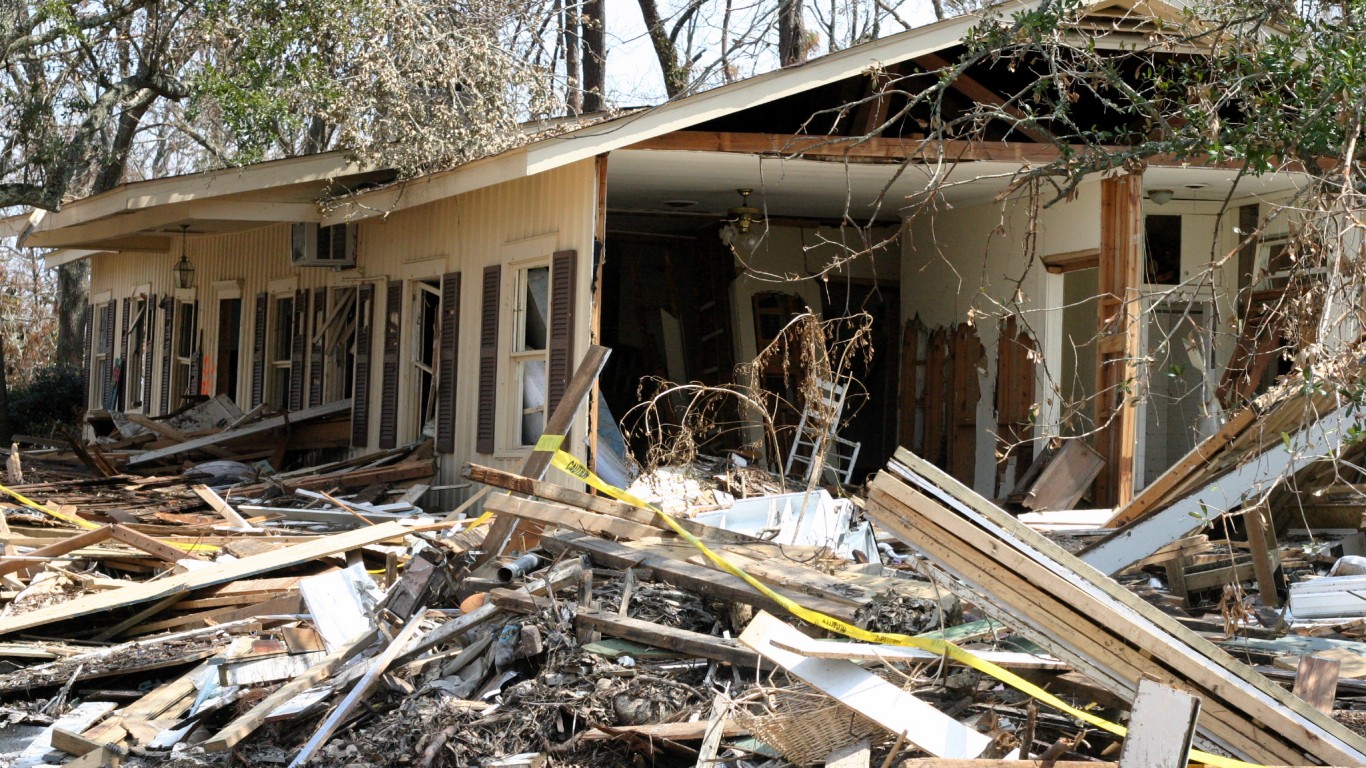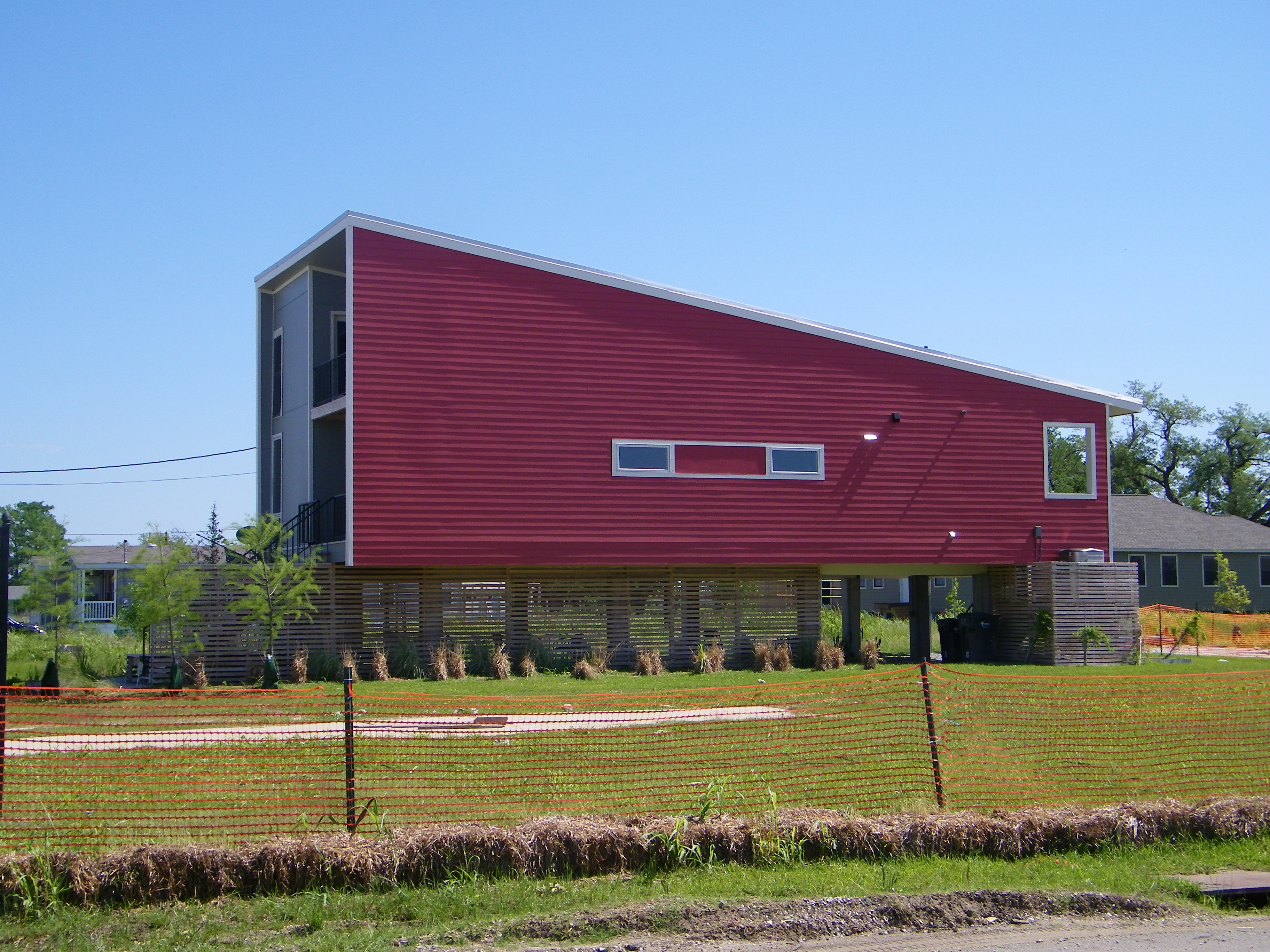

One of the most often seen images ahead of a hurricane making landfall is that of customers lined up at their local lumber store with stacks of plywood sheets to cover windows and doors in an effort to protect their homes from a storm. Depending on the severity of the storm, that may be money well-spent or money wasted.
Hurricanes are typically categorized on a scale of 1 to 5 based on wind speed. A Category 1 storm brings winds in the range of 74 to 95 miles per hour, while Category 2 speeds range from 95 to 110 mph and Category 3 speeds at 111 to 129 mph. Category 4 and 5 speeds are 130 to 156 mph and 157 mph or higher, respectively. These numbers, however, have no relation to rainfall, flooding or storm surges, all of which can wreak even more damage on a home.
Getting a home prepared for a hurricane generally involves making improvements to mitigate the effects of high winds and to prevent water from getting into the house. Rather than spend an hour in line and a few hundred dollars on lumber and sandbags hours before the storm is due to hit, it may make sense to take some precautions when the weather is good and you have time to spare to make small improvements that can pay off when the storm hits.
The Insurance Institute for Business and Home Safety (IBHS) has a list of suggested precautions costing nothing to more than $2,000 that can make a home more resilient to a hurricane. The IBHS also recommends that you know exactly what your homeowner’s insurance policy covers and learn the basic flood elevation (BFE) of your property to determine whether it’s above or below that level. The property’s BFE is the elevation at which your home has a 1% chance of flooding in any given year (these are often misleadingly called 100-year floods). Flood maps and the local building department are both good places to find the BFE.
IBHS also suggests that you make a detailed inventory of your possessions to use in the event a storm damages your property. You can use your smartphone’s camera to make the job easier.
Among other low-cost or no-cost steps you can take are to remove objects from your yard that may become airborne in a hurricane and damage your and others’ homes. Store bicycles and other movable items in the garage or a storage building or even in a swimming pool. Clean gutters and downspouts to prevent clogs that could cause water damage to the roof and make sure downspouts direct water away from the building.
The following IBHS cost estimates are based on a typical 2,000-square foot home in a coastal market in the southeastern United States.
For less than $10, you can purchase a tube of roofing cement to secure loose shingles to keep them on the roof, and for another $10 you can purchase sealant and stainless steel screws to secure the home’s soffits to help keep water out.
Keep all interior doors closed, whether you are leaving or staying. This reduces the impact of wind getting inside your home and literally blowing it up like a balloon to the point where the roof could blow off entirely.
The IBHS recommends bracing your garage door (approximate cost $100 to $200) to prevent it from blowing in and allowing the force of the wind to push up on the roof. Fix leaks around skylights ($100 to $150) to help keep water out. Remove or close off gable end vents ($300 to $400) to prevent water from getting in. Remove and replace flashing around a chimney ($275 to $475), again to prevent water from seeping in.
Get the roof of the house professionally inspected ($500) and fix any leaks in flashing around windows ($500) and roof valleys ($500). Sealing the roof deck with tape and tar paper ($500 or more) should be done when the roof is being replaced, and the roof deck should be renailed ($650) with closer nail spacing and bigger nails.
Among more expensive steps are bracing gable end walls ($1,000 to $1,500), retrofitting wind or hurricane straps to help keep the roof on ($1,200) and upgrading to a wind-rated garage door ($1,300). Garage doors are among those things especially vulnerable to high winds.
At the high end of storm preparations are code-conforming aluminum panels to cover windows in the event of a storm ($2,350), upgrading to pressure-rated and impact-rated windows ($5,375) to reduce vulnerability to flying debris, and purchasing a whole-home power generator ($4,000 to $8,000).
While winds from a Category 1 hurricane generally cause relatively little damage to houses, Category 2 and higher storms can uproot trees, cause major damage to buildings and lead to power outages lasting several days.
Flooding and storm surge damage, which can be even more devastating than wind damage, can be lessened by sealing the home against leaks, but the only thing that eliminates high water damage is higher ground. That is why many homes, like the one pictured below in New Orleans, are built above grade after a hurricane.
Sponsored: Attention Savvy Investors: Speak to 3 Financial Experts – FREE
Ever wanted an extra set of eyes on an investment you’re considering? Now you can speak with up to 3 financial experts in your area for FREE. By simply
clicking here you can begin to match with financial professionals who can help guide you through the financial decisions you’re making. And the best part? The first conversation with them is free.
Click here to match with up to 3 financial pros who would be excited to help you make financial decisions.
Thank you for reading! Have some feedback for us?
Contact the 24/7 Wall St. editorial team.




